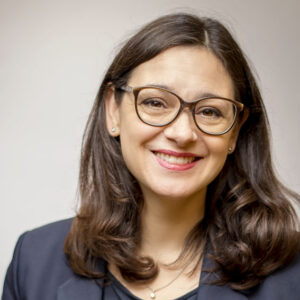Metropolitan region creates planning foundation for future energy supply to e-cars. For the first time a method has been developed and tested which enables areas suitable for electric charging stations to be identified for the entire Hamburg metropolitan region. This will increase efficiency and prospects for success of both public and private investment. The HansE model project is supported by the Federal Ministry of Transport and Digital Infrastructure (BMVI) in the amount of around 1.6 million euros, with the implementation of the relevant electric mobility funding guideline coordinated by NOW GmbH. It has now been decided to apply the planning instrument developed here throughout the entire country.
First the charging columns, then the cars? Or rather the other way around? What is the right order in developing electric mobility to bring about good utilisation of charging infrastructure? The Hamburg metropolitan region has created the foundation to be able to deal with this chicken/egg problem. Planning instruments are available which illustrate the potential for establishing charging infrastructure for electric vehicles, which varies according to area. On the basis of now completed projects, a demand-oriented network of charging infrastructure will be made possible in future throughout the whole region of Hamburg metropolitan region, beyond the city’s limits, in order to foster electric driving in urban as well as rural areas. In the areas deemed suitable for example, 50 charging points at 25 locations were put into operation.
On the occasion of the results press conference in Bad Segeburg, Enak Ferlemann, Parliamentary State Secretary at the BMVI said:
“A well-developed charging infrastructure is the backbone of market development of electric mobility. The federal government therefore supports the construction and expansion of a network of charging stations in urban and also rural areas as a matter of high priority. Crucial in this regard is reliably regulated user access as well as uniform standards in the selection of charging locations. The HansE project makes a valuable contribution here and impressively demonstrates how great the potential is in terms of the transport transformation in northern Germany.”
A scientifically-based, practice-oriented method to establish publicly-accessible charging infrastructure was developed for the project. The Institute of Urban and Transport Planning, RWTH Aachen University examined the Hamburg metropolitan region for suitable areas outside the city’s limits. In addition traffic flows, existing charging infrastructure as well as transport development prognoses were analysed and the regional economy, jobs and other criteria incorporated. Driver stopping time, leisure and surrounding shopping facilities were also factors taken into consideration. In the areas examined, property owners there were able to participate as location partners in the charging column construction. One of the preconditions for HansE locations was that they be publicly available around the clock.
The BMVI has now decided to deploy the “STELLA” planning instrument throughout the country.
Dr. Andreas Witte, Senior Researcher at the Institute of Urban and Transport Planning at RWTH Aachen University:
“We were able to test the STELLA methodology on a large regional scale. For us, the added value of HansE therefore lies in its transferability – implementing this model in local practice. This instrument will be the guiding basis for municipal planning processes, because it provides a relatively reliable forecast about whether the planned charging columns in each spatial context will be accepted by users in practice.”
Through “HansE”, districts, counties, cities and municipalities in Schleswig-Holstein, Lower Saxony and Mecklenburg-Vorpommern get the opportunity to develop a common, standardised and quality-assured strategy in electric mobility.
State Councillor Andreas Rieckhof, Chairman of the Regional Council of the Hamburg metropolitan region:
“Metropolitan regions are the drivers of innovation – this is also the case for electric mobility. We are delighted that with HansE, the Hamburg metropolitan region is acting as a driving force for the federal government and has played its part in developing a methodology that will now be rolled out nationwide. I would like to thank all project participants and in particular the federal ministry as the funding body.”
All location partners have entered into a contract with E.ON. The construction and operation of the charging infrastructure will be carried out by Uniper Technologies on behalf of E.ON SE with the support of HanseWerk. Only renewable energy will be used for electricity supply.
Andreas Fricke, HanseWerk AG Executive Board, on local implementation:
“We have gained valuable experience, particularly as regards cooperation with local partners on the ground. Although we have good concepts and attractive business models, for many, electric mobility has not yet become part of everyday life. There is still much to accomplish. HanseWerk sees itself as a central actor for linking sectors as part of the energy and transport transformation.”
In Bad Segeberg a HansE charging column was also built. It is located at a shopping centre in Gieschenhagen and will be operated by regional energy supplier, ews. It has been shown here that the prognoses work well in practice.
District President Claus Peter Dieck:
“The challenges of climate change and air pollution control are ever-present for the districts of the metropolitan region. Responsible policies must be realised locally and generate the most concrete measures possible, especially in the mobility sector. In the Segeberg district we are doing exactly that with electric mobility.”
Project leader Peter Lindlahr, Managing Director of hySOLUTIONS on the project’s completion:
“Improved vehicle concepts, higher ranges and a broader palette of models means that over the coming years, a significant increase in the electric share of transport volume can be expected. This also applies to the Hamburg metropolitan region. It is high time that the systematic development of charging options was advanced. HansE is a good example of successful cooperation on local, regional and national levels.”


